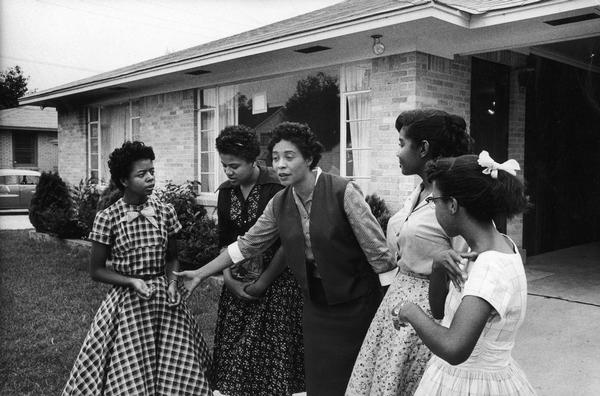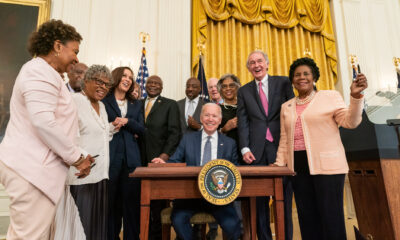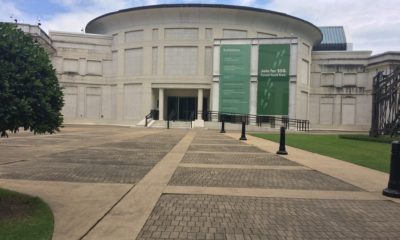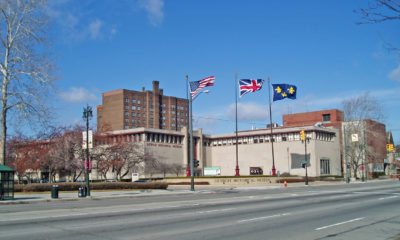7 Summer Sites
The Little Rock Central High School National Historic Site: Teaching the Lessons of History

One of America’s most enduring photos from the Civil Rights Movement captures a mob of angry whites taunting Elizabeth Eckford , clutching her books, as she bravely makes her way into Central High School.
Eckford and eight other African American teenagers, known as The Little Rock Nine, integrated the formerly all-white Central High School, ushering the nation into a new era of education.
The Little Rock Central High School National Historic Site
sits across the street from the high school. It is part of the National Park Service, and its superintendent is Robin White, noted for her unparalleled commitment to justice for all. TheVillageCelebration asked Superintendent White a trio of questions to explore and understand the reasons museums documenting the African American experience are more relevant than ever.
TVC: Why is it important for the Little Rock Central High School National Historic Site to host events addressing human and civil rights?
Superintendent Robin White: Our site was legislated as a civil and human rights National Historic Site by Congress. Our purpose is to educate and serve as a common ground to provoke shared dialogue for public consciousness of our nation’s continued struggle towards equity and equality. Our goals are to address a wide range of human and spiritual violations experienced by people of diverse ancestries, religions, cultures, economic classes, genders, sexual orientations and others of education inequity and inequality, economic literacy, and impoverished and anguished communities to begin our journey of hope and healing. We are still addressing human violations 60 years after The Little Rock Nine integrated Central High School.
TVC: The Central High Crisis was a watershed moment in American history. What is the reaction of those who visit the site and have never attended segregated schools?
Superintendent Robin White: We encounter mixed reactions. A few times we have been able to change the minds and hearts of those who didn’t care for the story or the struggle. Sometimes, I have to participate and debrief some international groups when they become overwhelmed. Other times I dialogue with youth beforehand, and we discuss what it means to be a change agent and what courage looks like. Most people are grateful to witness and learn the story firsthand because it was not part of their school curriculum and had never heard of the Little Rock Nine.
TVC: What is the significance of places like the Little Rock Central High School National Historic Site?
Superintendent Robin White: The significance of places like the Little Rock Central High School National Historic Site is that people of the community are provided a venue to share their narratives, to discuss their social issues in a holistic environment. There can be no reconciliation if we don’t own our biases. When we fail to address the wretched side of American history or acknowledge the full impact of enslavement, the Civil War, segregation, social oppression and legislated racism, herein lies the legacy of America’s untreated trauma, in this valley of unheard pain and manufactured fear. It is important to provide a venue for people to collectively explore the impact of social oppression and participate in conscience engagement to transform from awareness to action.

-

 Featured10 months ago
Featured10 months agoCalifornia Is the First State to Create A Public Alert for Missing Black Youth
-

 Featured10 months ago
Featured10 months agoAfrican American Leaders Stay the Course Amid Calls for President Biden To Bow Out of Race
-

 Featured10 months ago
Featured10 months agoThe Debate Fallout Lands on Both Candidates
-

 Featured9 months ago
Featured9 months agoPresident Joe Biden Decides to Withdraw from the Presidential Race
-

 Featured9 months ago
Featured9 months agoIn One of His Final Speeches as President, Biden Says It’s Time for ‘Fresh Voices’
-

 Featured10 months ago
Featured10 months agoPresident Joe Biden Describes Shooting of Donald Trump As ‘Sick’









